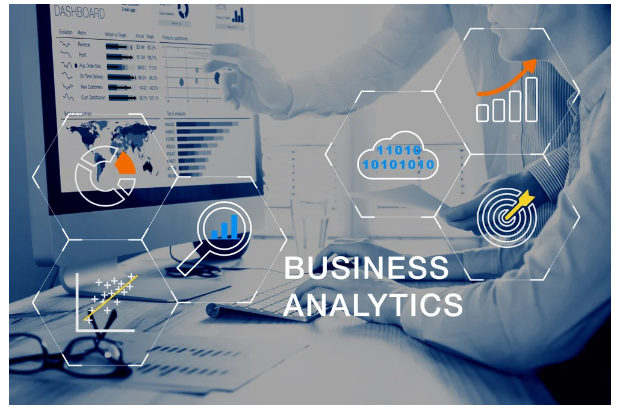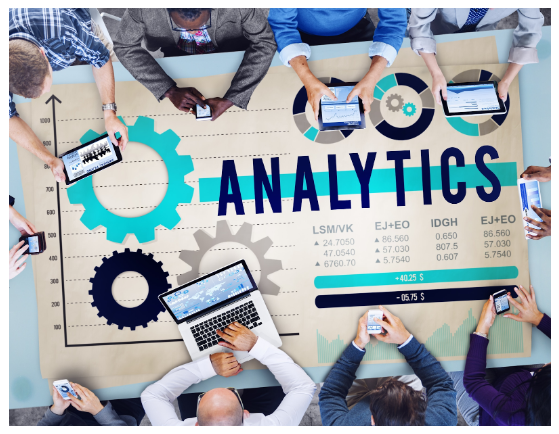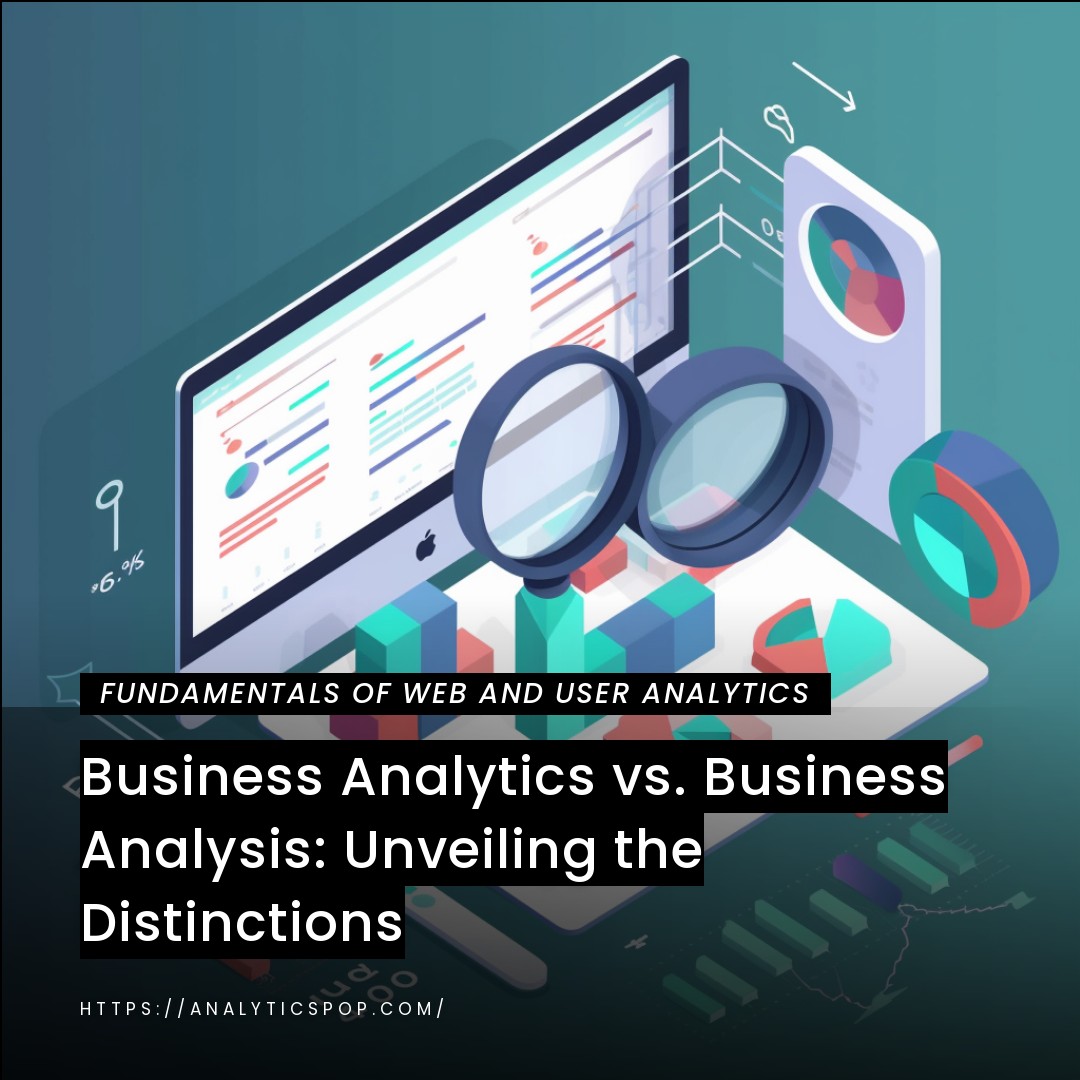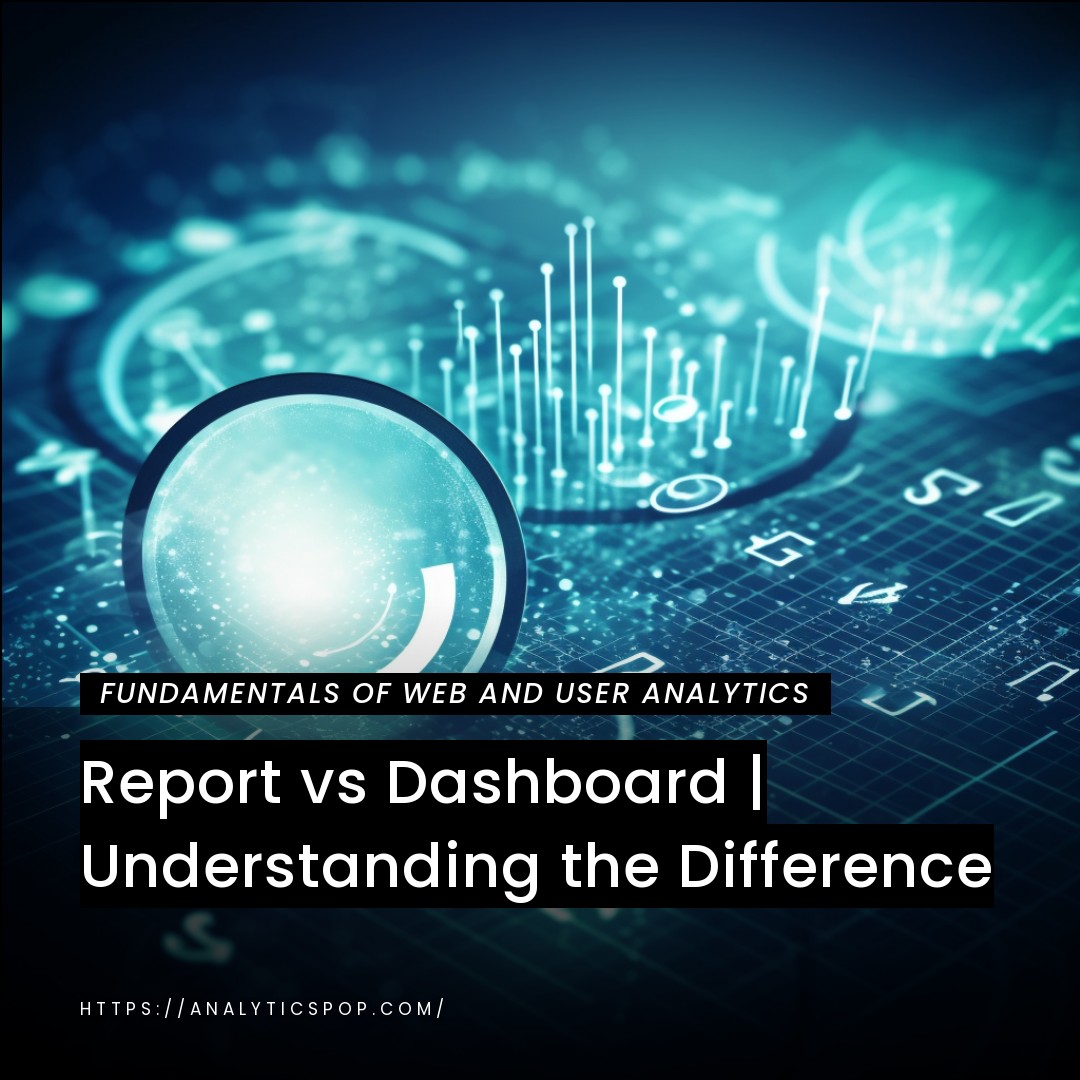While the terms “business analytics” and “business analysis” are often used interchangeably, they refer to distinct disciplines within the realm of data-driven decision-making. Understanding the differences between these two is crucial for organizations seeking to optimize their operational processes.
Business analysis primarily focuses on understanding business needs, identifying problems, and proposing solutions. It involves gathering and documenting requirements, conducting feasibility studies, and facilitating stakeholder communication. For example, a business analyst might analyze current workflows, interview users, and recommend process improvements based on their findings.
On the other hand, business analytics delves deeper into data analysis, leveraging statistical models and predictive algorithms to uncover insights and patterns. It involves exploring historical and real-time data to identify trends, develop forecasts, and make data-driven recommendations. For instance, a business analytics professional might analyze customer data to identify segments with high conversion rates and propose targeted marketing strategies accordingly.
Statistics play a vital role in business analytics, enabling professionals to measure performance, conduct hypothesis testing, and perform regression analysis. Furthermore, data visualization tools and techniques are utilized to present findings in a visually appealing and easily understandable manner.
Ultimately, while business analysis focuses on understanding and improving processes, business analytics aims to extract actionable insights from data to drive strategic decision-making. Both disciplines are integral to organizations, complementing each other to achieve optimal results. By harnessing the power of business analytics and business analysis, companies can enhance their operations, increase efficiency, and gain a competitive edge in today’s data-driven business landscape.
A brief overview of business analytics and business analysis
Business Analytics and Business Analysis are two distinct disciplines within the field of business management. While they share some similarities, they have different focuses and objectives. Here’s a brief overview of each:
- Business Analytics: Business Analytics involves the use of data, statistical analysis, and quantitative techniques to derive insights and make data-driven decisions. Its primary objective is to uncover patterns, trends, and relationships in data to support strategic decision-making, optimize business processes, and identify opportunities for improvement.
Business analytics professionals leverage tools and techniques such as data mining, statistical modeling, predictive analytics, and data visualization to analyze large datasets and provide insights that drive business performance. The application of business analytics spans various functional areas such as marketing, finance, operations, and supply chain management. - Business Analysis: Business Analysis focuses on understanding business needs, defining requirements, and proposing solutions to address those needs. Its primary objective is to bridge the gap between business stakeholders and IT by aligning business goals with technological solutions. Business analysts work closely with stakeholders to identify and document business requirements, analyze existing business processes, and propose changes or improvements to achieve desired outcomes.
They employ various techniques such as requirements elicitation, stakeholder management, process modeling, and problem-solving to facilitate effective communication, capture requirements, and ensure the delivered solution meets the business needs. Business analysis is typically applied during the lifecycle of projects, from initiation to completion, across different industries and domains.
While business analytics focuses on leveraging data to drive decision-making, business analysis focuses on understanding business needs and designing solutions. Both disciplines play crucial roles in organizations, with business analytics providing insights and recommendations based on data analysis and business analysis, ensuring that the proposed solutions meet business objectives and requirements. Collaboration between business analytics professionals and business analysts can bring together the power of data-driven decision-making and effective solution design to drive organizational success.

Understanding Business Analytics
Business analytics is a discipline that uses data, statistical methods, and analytical techniques to gain insights and make data-driven decisions. It focuses on transforming raw data into meaningful information that can be used to drive business strategies and improve operational efficiency.
At its core, business analytics aims to answer key business questions, uncover patterns, identify trends, and predict future outcomes. It involves gathering data from various sources, including internal systems, external databases, and even social media platforms, and then analyzing it to extract valuable insights.
The process of business analytics typically involves several steps. First, data is collected and stored in a structured format, ensuring its accuracy and reliability. Then, the data is cleaned and transformed to remove any inconsistencies or errors that might affect the analysis. Next, various analytical techniques, such as statistical modeling, data mining, and machine learning, are applied to uncover patterns, correlations, and anomalies within the data.
Business analytics enables organizations to make informed decisions and take proactive actions based on evidence rather than intuition. It helps businesses understand customer behavior, optimize marketing campaigns, improve operational efficiency, and identify new market opportunities. By leveraging data-driven insights, businesses can gain a competitive edge, enhance their decision-making processes, and drive innovation.
Organizations need skilled professionals with technical expertise, domain knowledge, and analytical skills to implement effective business analytics. These professionals are adept at using analytical tools and technologies, such as data visualization software, predictive modeling software, and programming languages like Python and R.
Business analytics is a powerful approach that empowers organizations to leverage their data for strategic decision-making. By analyzing data and extracting insights, businesses can optimize their operations, drive growth, and stay ahead in today’s data-driven business landscape.
Key components and techniques used in business analytics
Business analytics involves various components and techniques to analyze data and extract valuable insights effectively. Here are some key components and methods commonly used in business analytics:
- Data Collection: Business analytics begins with collecting relevant data from various sources, including internal databases, external repositories, customer feedback, and social media platforms. This data is collected and organized in a structured format to facilitate analysis.
- Data Cleaning and Preparation: The collected data must be cleaned and prepared before analysis can occur. This involves removing inconsistencies, errors, and outliers and addressing missing or incomplete data. Data cleaning ensures the accuracy and reliability of the data being analyzed.
- Descriptive Analytics: Descriptive analytics involves summarizing and visualizing data to understand past and current trends clearly. Techniques such as data visualization, exploratory data analysis, and summary statistics provide meaningful insights into the data.
- Predictive Analytics: Predictive analytics leverages statistical modeling and machine learning algorithms to make predictions and forecasts based on historical data. These techniques analyze patterns and relationships within the data to forecast future outcomes, identify potential risks, and make data-driven decisions.
- Prescriptive Analytics: Prescriptive analytics goes beyond predicting outcomes and focuses on providing recommendations and actions to optimize business processes. It uses optimization algorithms and simulation models to suggest the best course of action based on various constraints and objectives.
- Data Visualization: Data visualization plays a crucial role in business analytics by presenting complex data in a visually appealing and easily understandable format. Visualizations such as charts, graphs, and dashboards help to communicate insights effectively, enabling decision-makers to grasp information quickly.
- Machine Learning: Machine learning techniques, such as regression analysis, clustering, classification, and natural language processing, are widely used in business analytics. Machine learning algorithms can identify patterns, make predictions, and automate decision-making processes based on historical data.
- Text Mining and Sentiment Analysis: Text mining and sentiment analysis techniques are used to analyze unstructured data, such as customer reviews, social media posts, and survey responses. These techniques extract meaningful insights from text data, uncovering sentiments, opinions, and trends.
- Data Integration and Big Data Analytics: Business analytics often involves integrating data from multiple sources, including structured and unstructured data. Big data analytics techniques handle large volumes of data to uncover patterns, perform real-time analysis, and gain insights that were previously difficult to obtain.
- Data Security and Privacy: Data security and privacy are critical components of business analytics. Organizations must protect data, comply with relevant regulations, and adhere to ethical standards when handling sensitive information.
By leveraging these components and techniques, businesses can gain valuable insights from data, make informed decisions, optimize processes, and drive growth in today’s data-driven business environment.

Examples of business analytics applications and benefits
Business analytics has various applications across industries, enabling organizations to gain valuable insights and achieve various benefits. Here are a few examples of how business analytics is applied and the benefits it can bring:
- Customer Analytics: By analyzing customer data, businesses can gain insights into customer behavior, preferences, and needs. This information allows companies to personalize marketing campaigns, optimize pricing strategies, improve customer satisfaction, and identify cross-selling or upselling opportunities.
- Supply Chain Optimization: Business analytics helps optimize the supply chain by analyzing data related to inventory levels, demand patterns, production capacities, and transportation logistics. This analysis enables organizations to streamline operations, reduce costs, minimize stockouts, and improve overall supply chain efficiency.
- Fraud Detection: Analytics techniques can be employed to detect and prevent fraudulent activities. By analyzing patterns and anomalies in transactional data, organizations can identify suspicious behaviors, flag potential fraudulent activities, and take proactive measures to mitigate risks.
- Financial Analysis: Business analytics plays a crucial role in financial analysis by providing insights into revenue trends, cost structures, profitability, and cash flow. This enables organizations to make informed financial decisions, identify cost-saving opportunities, and optimize financial performance.
- Risk Assessment and Management: Analytics helps organizations assess and manage risks by analyzing historical data and identifying potential risk factors. This includes evaluating credit, market, operational, and compliance risks. Companies can develop strategies to mitigate risks and make better-informed decisions by understanding and quantifying risks.
- Marketing and Campaign Optimization: By analyzing marketing data, such as customer demographics, purchasing behavior, and campaign performance, organizations can optimize marketing strategies. Business analytics enables companies to target specific customer segments, identify the most effective marketing channels, and measure the ROI of marketing campaigns.
- Operations and Process Improvement: Analytics can identify bottlenecks, inefficiencies, and process variations within operations. Organizations can optimize workflows, reduce waste, improve productivity, and enhance overall operational performance by analyzing operational data.
- Predictive Maintenance: Organizations can predict equipment failures and proactively schedule maintenance activities by analyzing equipment sensor data and historical maintenance records. This helps reduce downtime, optimize maintenance schedules, and minimize maintenance costs.
The benefits of business analytics include the following:
- Improved decision-making based on data-driven insights
- Enhanced operational efficiency and cost reduction
- Increased revenue through targeted marketing and customer segmentation
- Better risk management and fraud detection
- Competitive advantage through identifying market trends and opportunities
- Improved customer satisfaction and retention
- Enhanced forecasting and demand planning
- Streamlined supply chain operations
These examples and benefits illustrate how business analytics empowers organizations to leverage their data effectively and drive success in various aspects of their operations.
Unpacking Business Analysis
Business Analysis is a multifaceted discipline that involves understanding and analyzing various aspects of a business to identify needs, solve problems, and propose effective solutions. Let’s unpack the key components of business analysis:
Understanding Business Needs:
- Business analysts start by deeply understanding the organization’s goals, objectives, and strategies.
- They engage with stakeholders, including business managers, subject matter experts, and end-users, to identify and prioritize business needs and requirements.
- This process involves conducting interviews, workshops, surveys, and observations to gather insights and perspectives.
Requirements Elicitation and Management:
- Business analysts elicit requirements by gathering information about what the business needs from a proposed solution or change.
- They document and analyze functional and non-functional requirements, ensuring clarity, completeness, and consistency.
- Requirements are managed throughout the project lifecycle, including requirements prioritization, traceability, and change management.
Analyzing Business Processes:
- Business analysts examine existing business processes to understand how work is being done and identify areas for improvement.
- They use process modeling, flowcharts, and value stream mapping techniques to document and visualize workflows.
- Through process analysis, they identify bottlenecks, inefficiencies, and opportunities for automation or optimization.
Stakeholder Management:
- Business analysts work closely with stakeholders, including business owners, project sponsors, users, and IT teams.
- They facilitate communication and collaboration, ensuring stakeholders’ needs and expectations are understood and addressed.
- Stakeholder management involves identifying stakeholders, analyzing their interests, influence, and requirements, and developing strategies to engage and manage them effectively.
Solution Proposal and Evaluation:
- Business analysts play a vital role in proposing and evaluating potential solutions to meet the identified business needs.
- They conduct feasibility studies, cost-benefit analyses, and impact assessments to assess proposed solutions’ viability and potential risks.
- They collaborate with stakeholders to define solution requirements, evaluate alternatives, and recommend the most appropriate approach.
Communication and Documentation:
- Business analysts are responsible for effectively communicating complex information to diverse audiences.
- They document requirements, process flows, use cases, and other relevant artifacts to ensure clarity and shared understanding.
- They create reports, presentations, and visualizations to convey insights, recommendations, and progress to stakeholders.
Collaboration with IT and Project Teams:
- Business analysts collaborate with IT teams, project managers, and other stakeholders to ensure the successful implementation of proposed solutions.
- They provide guidance and support in developing, testing, and deploying the solution, ensuring it meets the defined requirements and business objectives.
Business Analysis is an iterative and dynamic process that requires analytical, problem-solving, and interpersonal skills. It involves working across various domains, such as software development, process improvement, organizational change, and strategic planning, to drive business success.

Role and Responsibilities of business analysts
The role of a business analyst encompasses a wide range of responsibilities and activities. Business analysts bridge business stakeholders and IT teams, ensuring that business needs and objectives are effectively translated into technical solutions. Here are the key roles and responsibilities of business analysts:
Requirements Elicitation and Management:
- Engage with stakeholders to elicit and document project, system, or process business requirements
- Conduct interviews, workshops, and other techniques to gather information and ensure a thorough understanding of business needs.
- Analyze, prioritize, and manage requirements throughout the project lifecycle.
- Ensure requirements are clear, concise, and aligned with business objectives.
Stakeholder Management:
- Identify and engage with stakeholders to understand their needs, expectations, and concerns.
- Build and maintain effective relationships with stakeholders, facilitating collaboration and communication.
- Manage stakeholder expectations by providing timely and accurate information, managing conflicts, and resolving issues.
Business Process Analysis and Improvement:
- Analyze existing business processes, workflows, and procedures to identify inefficiencies, bottlenecks, and opportunities for improvement.
- Design and document optimized future-state processes, incorporating industry best practices and business requirements.
- Collaborate with stakeholders to ensure process changes align with business goals and are successfully implemented.
Solution Assessment and Validation:
- Evaluate proposed solutions to ensure they meet business requirements and objectives.
- Conduct feasibility studies, cost-benefit analyses, and risk assessments to assess solution viability.
- Collaborate with stakeholders to validate solutions, gather feedback, and make necessary adjustments.
Documentation and Communication:
- Document and communicate business requirements, process models, use cases, and other relevant artifacts.
- Create clear and concise documentation easily understood by stakeholders and IT teams.
- Facilitate effective communication between business stakeholders and technical teams, translating business needs into technical requirements.
Collaboration with IT and Project Teams:
- Collaborate closely with IT teams, project managers, developers, and testers to ensure the successful delivery of projects.
- Provide guidance and support throughout the project lifecycle, including solution design, development, testing, and deployment.
- Facilitate effective collaboration between business stakeholders and technical teams, ensuring a shared understanding of requirements and project goals.
Continuous Learning and Professional Development:
- Stay updated with industry trends, best practices, and emerging technologies relevant to business analysis.
- Seek opportunities for professional development, such as attending training programs, obtaining certifications, and participating in industry events.
Analysts play a critical role in understanding business needs, defining requirements, and proposing practical solutions. They act as a liaison between business and technology, ensuring that the delivered solutions align with business goals and drive organizational success.
Methods and tools commonly used in business analysis
Business analysis is a process of identifying business needs and determining solutions to address those needs. Several methods and tools are commonly used in business analysis to facilitate the process. Here are some of them:
- SWOT Analysis: SWOT (Strengths, Weaknesses, Opportunities, and Threats) analysis is a technique used to identify internal and external factors that impact a business. It helps in understanding the current state of the organization and its competitive position.
- PESTLE Analysis: PESTLE (Political, Economic, Social, Technological, Legal, and Environmental) analysis is a framework used to analyze the external factors influencing a business. It provides insights into the macro environment and helps identify potential opportunities and threats.
- Stakeholder Analysis: Stakeholder analysis is used to identify and understand the stakeholders involved in a project or initiative. It helps analyze their interests, influence, and level of involvement, enabling effective communication and stakeholder management.
- Business Process Modeling: Business process modeling involves creating visual representations of business processes using tools like flowcharts or BPMN (Business Process Model and Notation). It helps analyze and improve business processes by identifying bottlenecks, inefficiencies, and areas for optimization.
- Use Case Modeling: Use case modeling is used to identify and define the functional requirements of a system or software application. It involves creating use case diagrams and scenarios to capture user interactions and system interactions.
- Data Analysis: Data analysis techniques, such as data mining, visualization, and statistical analysis, are employed to extract insights from large datasets. It helps understand trends, patterns, and relationships within the data, enabling data-driven decision-making.
- Requirements Elicitation and Management: Techniques like interviews, workshops, surveys, and observation are used to gather and document stakeholder requirements. Requirements management tools organize, track, and prioritize requirements throughout the project lifecycle.
- Gap Analysis: Gap analysis involves comparing the current state of the business with the desired future state to identify gaps and areas for improvement. It helps in setting realistic goals and creating strategies to bridge the gaps.
- Decision Analysis: Decision analysis techniques, such as decision trees, decision matrices, and cost-benefit analysis, are employed to evaluate alternative solutions and make informed decisions. It involves weighing different factors and assessing each option’s potential risks and benefits.
- Prototyping and Wireframing: Prototyping and wireframing tools create interactive prototypes or visual representations of user interfaces. They help stakeholders visualize and validate requirements, ensuring alignment between business needs and the proposed solution.
These methods and tools are often combined, depending on the specific context and objectives of the business analysis effort. They provide structure and guidance to business analysts to understand business problems, identify opportunities, and develop effective solutions.

Differentiating Business Analytics and Business Analysis
Business Analytics and Business Analysis are two related but distinct disciplines within the broader field of business management. While they share some similarities, there are key differences between them. Here’s a breakdown of how they differ:
Business Analytics:
- Focus: Business Analytics primarily uses data analysis to derive insights and make data-driven decisions. It involves using statistical and quantitative techniques to extract meaning from large datasets.
- Objective: The main objective of Business Analytics is to uncover patterns, trends, and relationships in data to support strategic decision-making, improve business performance, and identify opportunities for optimization.
- Skills and Tools: Business Analytics requires proficiency in statistical analysis, data mining, data visualization, machine learning, and predictive modeling. Tools like Excel, SQL, R, Python, and data visualization software are commonly used.
- Application: Business Analytics is applied across various functional areas of an organization, such as marketing, finance, operations, and supply chain management. It helps forecast demand, understand customer behavior, optimize pricing strategies, and improve operational efficiency.
Business Analysis:
- Focus: Business Analysis focuses on understanding an organization’s business needs, problems, and opportunities. It involves assessing business processes, identifying requirements, and proposing solutions to address those needs.
- Objective: The main objective of Business Analysis is to bridge the gap between business stakeholders and IT by defining and documenting requirements for software systems, processes, or organizational changes. It aims to align business goals with technological solutions.
- Skills and Tools: Business Analysis requires skills in requirements elicitation, stakeholder management, process modeling, problem-solving, and communication. Tools like requirements management software, modeling tools, and project management software are commonly used.
- Application: Business Analysis is applied during the initiation, planning, execution, and monitoring phases of projects. It is critical in defining project scope, capturing and managing requirements, and ensuring the delivered solution meets the business needs.
Business Analytics is focused on analyzing data to derive insights and drive decision-making, while Business Analysis is focused on understanding business needs, defining requirements, and proposing solutions. Both disciplines are essential in their respective contexts and often complement each other in addressing complex business challenges.
FAQ's
What sets business analytics apart from business analysis?
Business Analytics and Business Analysis are distinct disciplines within business management. While they share some common ground, several factors set Business Analytics apart from Business Analysis. Here are the key aspects that differentiate the two:
Focus and Objectives:
- Business Analytics primarily focuses on the analysis of data to uncover patterns, trends, and insights. The main objective is to leverage data to drive strategic decision-making, optimize business processes, and identify opportunities for improvement.
- On the other hand, business analysis focuses on understanding business needs, defining requirements, and proposing solutions. The objective is to bridge the gap between business stakeholders and IT by aligning business goals with technological solutions.
Skill Sets:
- Business Analytics requires strong quantitative and analytical skills, including statistical analysis, data mining, predictive modeling, and machine learning. Proficiency in R, Python, SQL, and data visualization software is crucial.
- Business Analysis emphasizes skills in requirements elicitation, stakeholder management, process modeling, problem-solving, and communication. Proficiency in requirements management tools, modeling tools, and project management software is essential.
Data-driven Decision-making vs. Business Solution Design:
- Business Analytics is focused on leveraging data and analytics to support decision-making processes within an organization. It aims to provide insights and recommendations based on data analysis, enabling evidence-based decision-making.
- Business Analysis is more concerned with understanding business needs and designing solutions to address those needs. It involves defining requirements, analyzing business processes, and proposing changes or improvements to achieve desired outcomes.
Application Areas:
- Business Analytics finds application across various functional areas, such as marketing, finance, operations, and supply chain management. It helps in customer segmentation, demand forecasting, pricing optimization, and operational efficiency.
- Business Analysis is applied during the lifecycle of projects, from initiation to completion. It is critical in defining project scope, capturing and managing requirements, and ensuring the delivered solution meets business needs.
While there is some overlap between Business Analytics and Business Analysis, their primary focuses and objectives differ. Business Analytics revolves around data analysis and decision support, whereas Business Analysis centers on understanding business needs and designing solutions. Both disciplines bring unique perspectives and skill sets, contributing to effective organizational problem-solving and decision-making.

How do the roles of business analysts and business analytics professionals differ?
Business analysts and business analytics professionals’ roles differ in their primary responsibilities, focus areas and skill sets. Here’s a comparison of the two roles:
Business Analysts: Responsibilities:
- Business analysts are responsible for understanding an organization’s business needs, problems, and opportunities.
- They conduct requirements elicitation by engaging with stakeholders, analyzing business processes, and documenting functional and non-functional requirements.
- They facilitate communication between business stakeholders and IT teams, translating business goals into technical solutions.
- They are crucial in defining project scope, managing requirements throughout the project lifecycle, and ensuring the delivered solution aligns with business objectives.
Focus Areas:
- Business analysts focus on understanding and improving business processes, systems, and workflows.
- They analyze business requirements, identify gaps and areas for improvement, and propose solutions or changes to address those gaps.
- They work closely with stakeholders to identify business problems, define project objectives, and ensure the proposed solutions meet business needs.
Skill Sets:
- Business analysts require requirements elicitation and management skills, stakeholder management, process modeling, problem-solving, and effective communication.
- They need a solid understanding of business domains, industry best practices, and project management methodologies.
- Proficiency in requirements management tools, modeling tools, and project management software is essential.
Business Analytics Professionals: Responsibilities:
- Business analytics professionals are responsible for leveraging data to drive strategic decision-making, optimize business processes, and identify opportunities for improvement.
- They analyze and interpret data to uncover patterns, trends, and insights that help organizations gain a competitive advantage.
- They build predictive models, perform statistical analysis, and conduct data mining to extract meaningful information from large datasets.
- They develop and deliver data-driven reports, dashboards, and visualizations to communicate stakeholder insights and recommendations.
Focus Areas:
- Business analytics professionals focus on leveraging data and analytics to support decision-making processes within an organization.
- They work on data exploration, visualization, statistical analysis, predictive modeling, and data-driven storytelling.
- They aim to provide insights and recommendations based on data analysis, enabling evidence-based decision-making.
Skill Sets:
- Business analytics professionals require strong quantitative and analytical skills, including statistical analysis, data mining, predictive modeling, and machine learning.
- Proficiency in programming languages like R or Python, SQL, and data visualization tools is crucial.
- They need a solid understanding of data analysis techniques, data management principles, and data governance.
In summary, business analysts primarily focus on understanding business needs, defining requirements, and proposing solutions. In contrast, business analytics professionals concentrate on analyzing data to drive strategic decision-making and optimize business processes. Both roles bring unique skill sets and perspectives to organizations, and their collaboration is often beneficial in solving complex business challenges.



